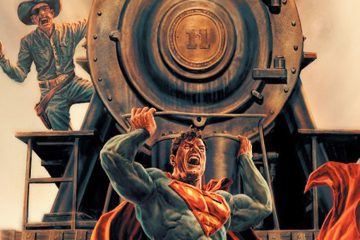Perhaps the single most iconic rivalry in comics, Batman and Joker have been locked in an ongoing battle between good and evil for decades. Beginning in Batman #1, the chaotic Clown Prince of Crime is driven by a desire to break Batman’s resolve and plunge Gotham into anarchy. Their shared history of violence is entertaining, yet it begs a simple question: Why do the two keep teaming up?Although Batman and Joker have been at odds since the Golden Age, first crossing paths in Batman #1, it was the villain’s Silver Age reintroduction that started their iconic rivalry. Beginning in Dennis O’Neil and Neal Adams’ “The Joker’s Five-Way Revenge” in Batman #251, the duo was established as arguably the quintessential hero vs. villain dynamic. On the one hand, Batman symbolizes law and order in its purest possible form, while Joker is the embodiment of chaos and the corruption of Gotham’s character. Hundreds of stories since have gone back to the well of Batman trying to bring in Joker as he terrorizes ordinary citizens. All of this put together makes it all the more confusing as to why, especially in the last decade, Batman and Joker keep finding themselves teaming up.Since Batman #1, Joker has been one of the most evil, formidable and conniving villains in Gotham. His first story followed the Clown Prince of Crime in a truly epic, masterful crime spree in which he murdered a slew of wealthy Gothamites and stole their jewels. With Batman hot on his trail, the villain managed to outdo himself when he showed up at a mob meeting interrupted by Batman and opened fire on everyone inside. His then-unprecedented macabre was so bad it forced Golden Age Batman into actually trying to kill the villain. When Joker was reintroduced in Batman #251, he got Batman’s attention by murdering each of the henchmen who had snitched on him to send him away. This was the first comic in which Batman referred to Joker as his arch-enemy.RELATED: Every “Old Man Batman” Comic, RankedRELATED: Why Does Batman Keep Letting The Joker Live?
Perhaps the single most iconic rivalry in comics, Batman and Joker have been locked in an ongoing battle between good and evil for decades. Beginning in Batman #1, the chaotic Clown Prince of Crime is driven by a desire to break Batman’s resolve and plunge Gotham into anarchy. Their shared history of violence is entertaining, yet it begs a simple question: Why do the two keep teaming up?
Although Batman and Joker have been at odds since the Golden Age, first crossing paths in Batman #1, it was the villain’s Silver Age reintroduction that started their iconic rivalry. Beginning in Dennis O’Neil and Neal Adams’ “The Joker’s Five-Way Revenge” in Batman #251, the duo was established as arguably the quintessential hero vs. villain dynamic. On the one hand, Batman symbolizes law and order in its purest possible form, while Joker is the embodiment of chaos and the corruption of Gotham’s character. Hundreds of stories since have gone back to the well of Batman trying to bring in Joker as he terrorizes ordinary citizens. All of this put together makes it all the more confusing as to why, especially in the last decade, Batman and Joker keep finding themselves teaming up.
Since Batman #1, Joker has been one of the most evil, formidable and conniving villains in Gotham. His first story followed the Clown Prince of Crime in a truly epic, masterful crime spree in which he murdered a slew of wealthy Gothamites and stole their jewels. With Batman hot on his trail, the villain managed to outdo himself when he showed up at a mob meeting interrupted by Batman and opened fire on everyone inside. His then-unprecedented macabre was so bad it forced Golden Age Batman into actually trying to kill the villain. When Joker was reintroduced in Batman #251, he got Batman’s attention by murdering each of the henchmen who had snitched on him to send him away. This was the first comic in which Batman referred to Joker as his arch-enemy.
#Batman #Team #Joker
Note:- (Not all news on the site expresses the point of view of the site, but we transmit this news automatically and translate it through programmatic technology on the site and not from a human editor. The content is auto-generated from a syndicated feed.))



